Meeting the painter: Ivan Bilibin. Portraying the Russian fairytales
Ivan Bilibin (1876-1942) — graphic artist, theatrical decorator, author of light watercolor landscapes, many sketches and drawings, is primarily known, of course, as the author of book illustrations in his special recognizable style.
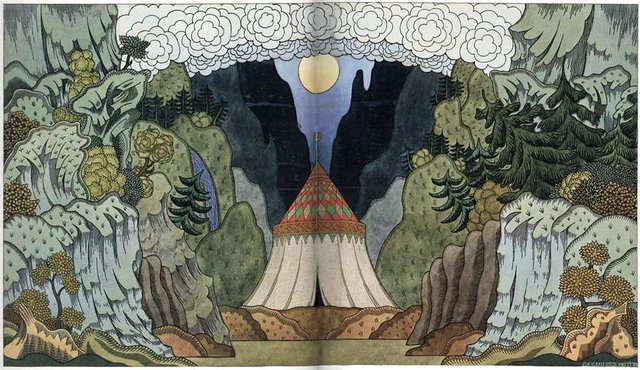
(Ivan Bilibin, sketch for the opera, "The Golden Cockerel", By Nikolai Rimsky-Korsakov, 1909)
Books of Bilibin represent holistic art objects, the artist did not only create illustrations, but also acted as a full-scale book designer, thinking through all the decorative elements: fonts, ornaments, initial letters, etc.

(Ivan Bilibin, cover and illustration for the collection of russian folk tales, 1900)
His works contain many images of traditional Russian culture, which are primarily reflected in his illustrations for Russian folk tales published for children.
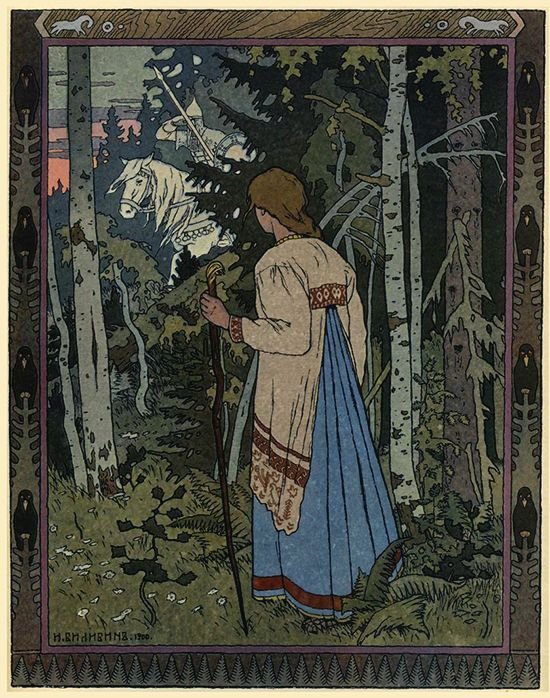.jpg!HD.jpg)
(Ivan Bilibin, Illustration for the fairy tale "Vasilisa The Beautiful", 1909)
.jpg!HD.jpg)
(Ivan Bilibin, illustration for the fairy tale "Vasilisa The Beautiful", 1909)
.jpg!HD.jpg)
(Ivan Bilibin, illustration for Alexander Pushkin's "Fairytale Of The Tsar Saltan", 1905)
In fact the artist devoted most of his creative works to Russian fairytale theme, the inspiration for which he drew in his trips to the North of Russia, getting acquainted with folk and decorative art. So in his works some technical compositional principles of Russian lubok and traditional wood engraving are applied.
The creator of the most replicated image in modern Russia
Ivan Bilibin is most famous in Russia for his illustrations, but his most replicable image does not relate to books or fairy tales, it passes through the hands of every Russian person, although very few know who its author is.
This is a two-headed eagle, now used on coins of the Bank of Russia. And, yes, this design belongs to Bilibin’s brush. This eagle, which has a similar style as the alconost birds (half-birds, half-women) in his fairy-tale illustrations, was painted in 1917 after the February revolution, as a coat of arms for the Provisional Government, and since 1992 this eagle has again become the official Russian symbol.

(left: Bilibin's design for the Provisional Government; right: modern design of Russian coins)
Russian modern: gloomy, but fascinating
Bilibin is a representative of the Russian modern (although he did not consider himself as such). If you compare his works with the works of other representatives of this style (also known as Art Nouveau), then immediately the graphic works of the Czech artist Alfons Mucha come to mind, who incidentally was also associated with the theater and illustrated many theatrical posters (as did Bilibin).
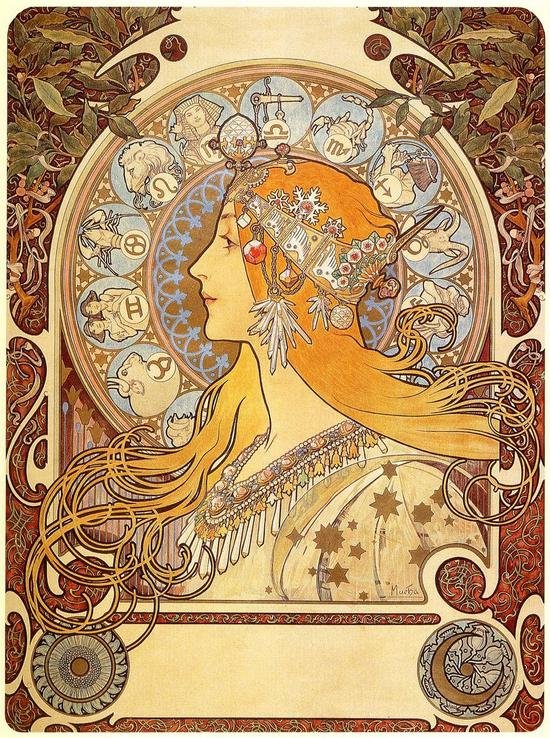
If you discard the obvious difference in the mood of the works and the color scheme, you can see similar graphic features that create a common decorative effect — clear dark contours, almost flat color fills and an abundance of ornaments.
It may seem strange, how in the absence of the Internet, two artists unfamiliar with each other (at least, the historical sources are silent about their intersections) began to use similar stylistic patterns. I think it’s all because of the overall impact of Japanese graphics. In the late 19th and early 20th century both in Europe and in Russia there was a boom in the popularity of Japanese art. Not only the illustrators, but also the painters, for example Van Gogh and Cezanne, were fascinated by it. Japanese graphics are distinguished by similar technical approach — a clear contour outline and flat-colored color fills.
Illustration of Ivan Bilibin to the "Tale Of Tsar Saltan" by Pushkin with a barrel floating on the sea reminds us the famous "Great Wave" of Katsushiki Hokusai.
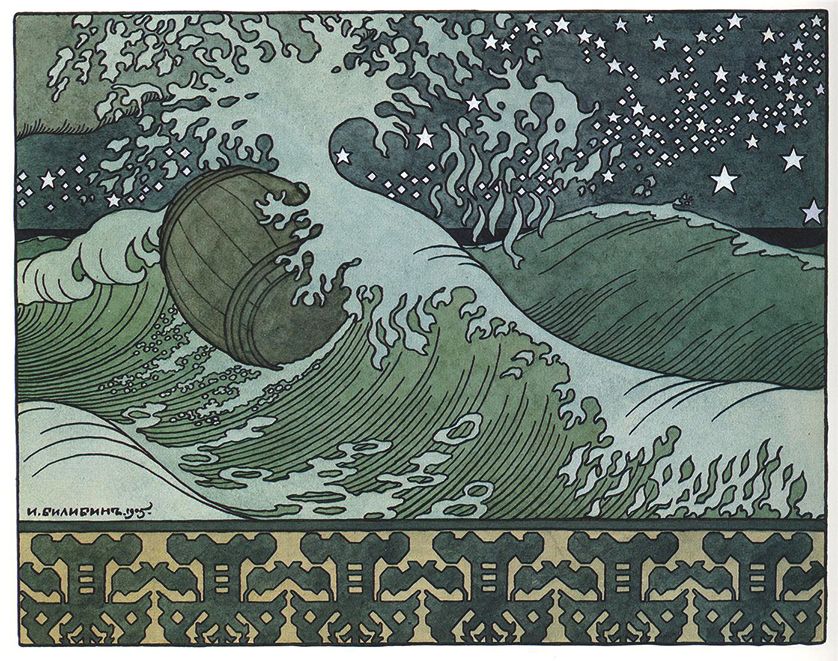.jpg!HD.jpg)
(Ivan Bilibin, illustration for Alexander Pushkin's "Fairytale Of The Tsar Saltan",1905)
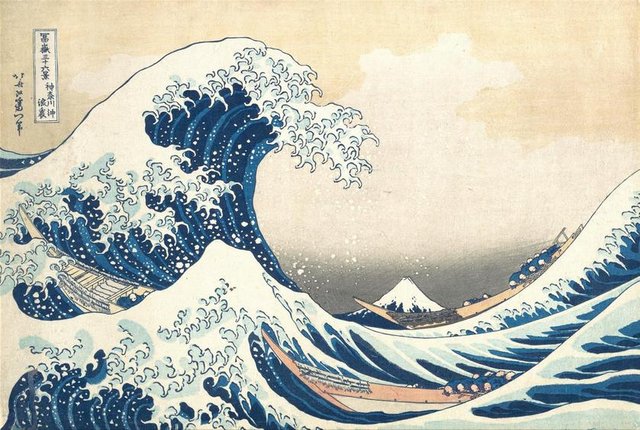
(Katsushika Hokusai, "The Great Wave Off Kanagawa",1831)
And yet, despite such stylistic intersections with other authors, Bilibin has his own unique style. If the European modern is characterized by refinement, lightness and hence the gentle, faded colors, smooth, complex lines, taken from natural forms, images of fanciful flowers, female grace that we see in the works of Alfons Mucha, then Russian modern represented by Bilibin, on the contrary, contains gloominess, images of a dense forest, the presence of broken lines and, of course, a completely different set of ornaments.

Here it is necessary to stop and explain why often Bilibin’s works are marked by this gloomy atmosphere — dark colors, stern faces of characters, even skull images in some works. I think the whole point is that the verbal layer of Russian folk tales and epics is imbued with gloomy atmosphere, sometimes with frightening images and metaphors, often associated with death. Thus, in my childhood there was a collection of traditional Russian fairy tales in which there was a whole section titled simply "about dead people" :D

No, of course Russian fairy tales and the Russian folk tradition do not contain only dark or death energy, but it is an inseparable part of it, underneath it lies a whole cultural layer where death can be viewed not as a death in the literal sense, but as a symbol of metaphysical transformation.
So the Russian existential choice in ancient tales does not sound like "to be or not to be", but as an inscription on the prophetic stone at the crossroads of the main character: "Go to the right — you will lose the horse, but you will save yourself; Go to the left — you will lose yourself, but you will save the horse; Go straight and you will lose yourself and the horse." It sounds unappealably harsh and tragic. But the symbolism in this case is probably deeper than the first impression. After all, this is a real Russian fairytale Zen koan. The interpretation of which may be for example such:
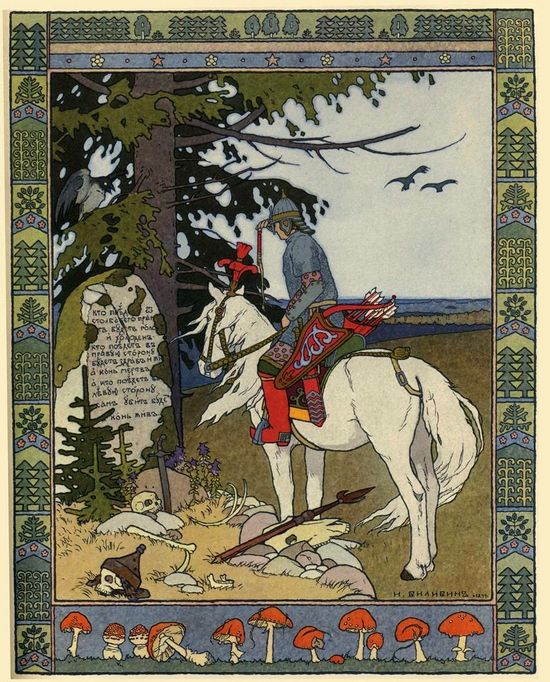.jpg!HD.jpg)
"Horse" represents the animal nature of the traveler, "horseman" is his human nature.
To go "to the right" means to follow the path of the righteous: to conquer the animal nature by the humanity. To go "to the left" — to release your animal instincts to the detriment of the human.
To go "straight" is to take the shortest path, way of the Wise, rejecting both the animal and the human for the sake of the Divine, the spiritual. The Third Way is not for animals, not for people, but only for those who dare to go beyond all known, to where all duality ends, beyond the edge of the World. "Go I know not whither and fetch I know not what" (a popular quote from Russian folk tales).
I am including these fairytale formulas of the Russian tradition to clarify that Russian folk tales are not light stories for children about cute elves and glowing fairies, they are sometimes closer to the mysterious trip reports that should be reviewed by the psychoanalyst.
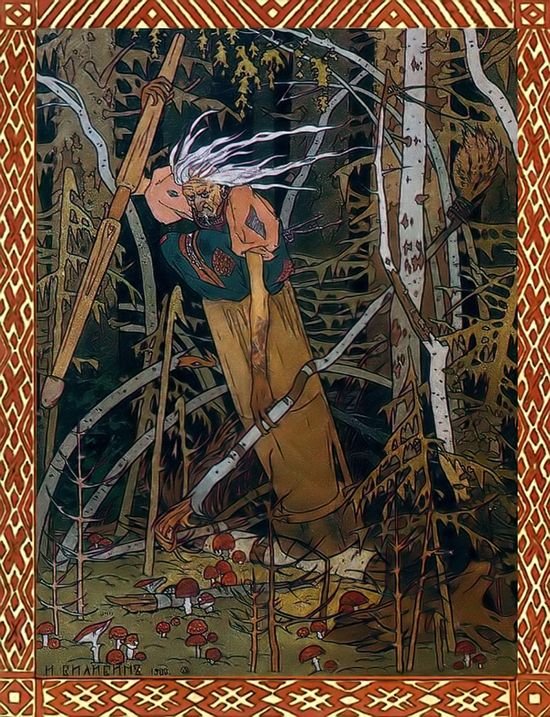.jpg)
Therefore, they are seemingly paradoxical in terms of energy spectra, for example, one of the most famous Russian fairytale characters — Baba Yaga, a witch with a wooden leg that lives in a forest in a hut on chicken legs (an image similar to some nightmarish characters from Bosch’s works), who is flying in a mortar, and occasionally, according to legends, eats people. At the same time she often helps the heroes of Russian fairy tales and is a symbol of the concentration of secret knowledge and wisdom — a deep, phantasmagoric, even ironic image... Thus the works of Bilibin also combine depth and decorativeness, and lightness and gloom and a peculiar irony at the same time.
I really love the works of this artist, because he, despite the flat graphical style, managed in some mysterious way to convey some specific reflection of Russian energy. At least I can easily recognize what it is hidden behind his lines, colors and forms. I hope you too will find something interesting in his graphics.

(Images of Ivan Bilibin's works are taken from https://www.wikiart.org/)
My other posts about artists:
Edward Hopper
Herman Hesse
Gorgeous
Art have its own language which commicate through heart..every one takes his own meaning
Love Art work
Yes, sure
I love the works of Bilibin! Full of details and very awesome! Wonderful! ^_^
Yes! I also love to examine details! :0)
I realy love the style of the pictures ! Keep going post like this !
Thank you for the comment! :)
Very koool work! Seems tedious and time consuming but I'll bet when the artist is immersed in it, the mind is at peace and there's no place they'd rather be! What a feeling it is to be there... a genuine place all by itself. A state of mind. The works are beautiful and look as though it should be stained glass pieces. Fantastic! Enjoyed!
I enjoyed your post, so much! Voted, followed, resteemed. I love the work of Ivan Bilibin and your thoughtful commentary is the perfect companion. :)
Thanks a lot for the comment! :)
Very interesting post with awesome pictures. Thanks for sharing :D
Thank you for reading!
Beautiful paintings.
impressive collection

Great work .loved your post dear😊
Thank you for this very interesting article. The artwork is just stunning.